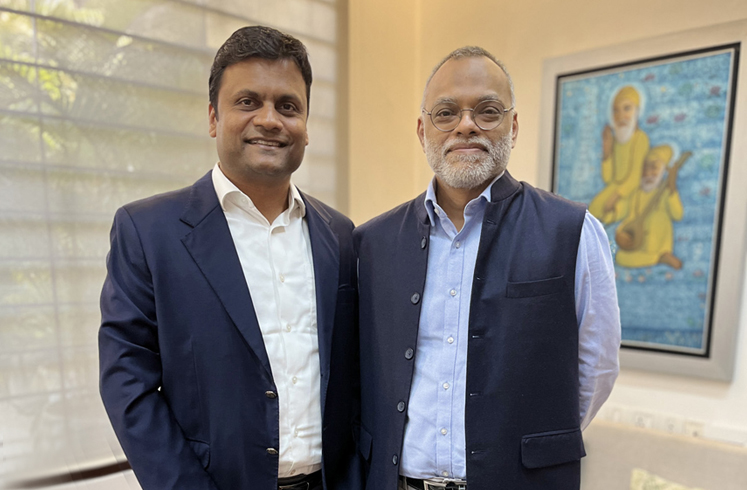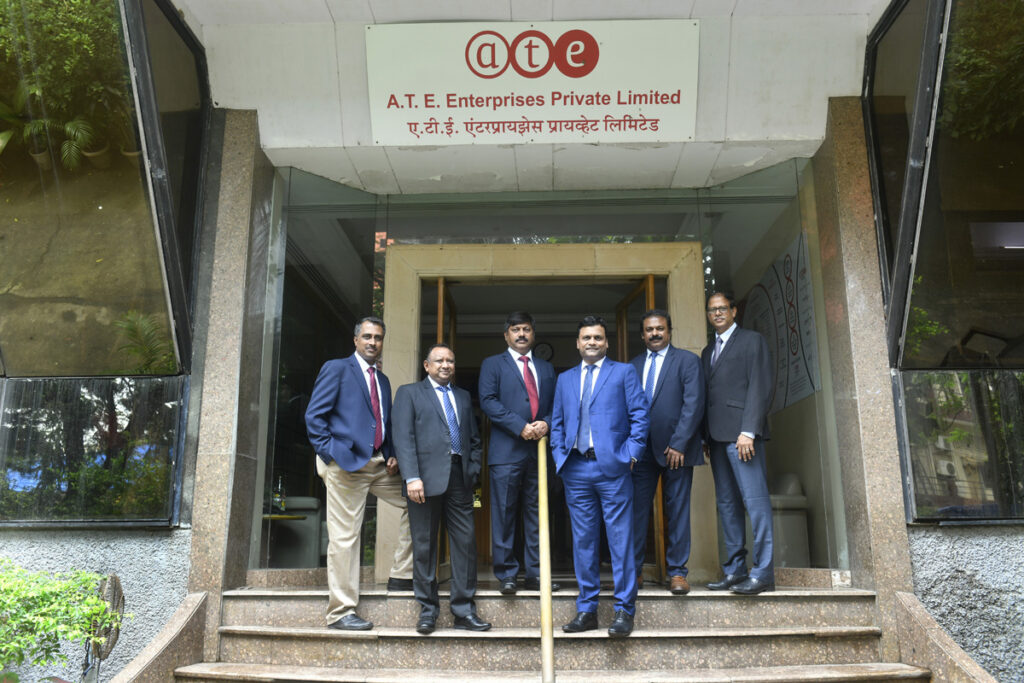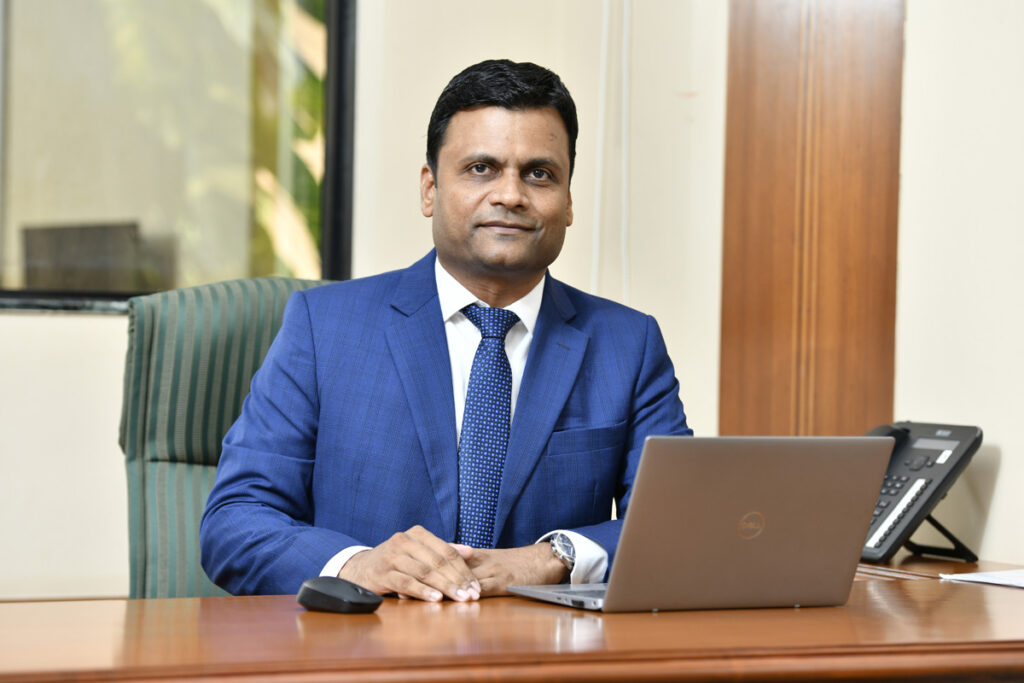The textile industry, a dynamic tapestry woven with economic intricacies and geopolitical threads, is witnessing shifts that demand resilience and strategic prowess. In a recent interview with Anuj Bhagwati, Managing Director, A.T.E., and Abhijit Kulkarni, President, A.T.E.’s Textile Engineering Group & Teraspin, we gained insights into the performance, strategies, and future outlook of the group in a landscape marked by both challenges and opportunities.

Mr. Bhagwati started by dissecting the current fiscal year. He provided a nuanced perspective on the performance of various segments within the textile industry. The spinning industry has experienced strength in dispatches from past orders. However, the intake of new orders has dwindled, painting a picture of a robust past but a more cautious present. The weaving preparation sector faced a slowdown, while warp knitting showcased pockets of promise, particularly in apparel, mosquito nets, athleisure, and shoe industry projects. An optimistic note resonated in the processing and effluent treatment plant (ETP) businesses, hinting at a potential upward trajectory for the industry.
Strategic Insights: From Business Resilience to Green Leadership
Anuj highlighted the interconnectedness of the textile chain, expressing hope that the strength in processing might act as a positive catalyst for various sectors. Customers’ feedback indicated a downturn in business but suggested signs of improvement, underscoring the industry’s resilience. We delved into the impact of geopolitical tensions on ATE’s ability to meet its targets. There is confidence that ATE would be close to its targets, acknowledging the beginning of the year’s strength and the challenges faced as the year progressed. Moving into the strategic domain, ATE values the importance of India having its manufacturing setup, reflecting on the success stories with Trutzschler and Karl Mayer.
Anuj underlined the significance of presence in the Indian market for both machine manufacturers and the Indian textile industry. When addressing the gaps in ATE’s portfolio, particularly in weaving and knitting, there is a desire to fill these voids as well as challenges in finding the right partner. Despite these gaps, there appears to be contentment with the current business and profits.
When it came to future potential in non-woven and technical textiles, along with recycled vertices, Anuj envisioned a significant opportunity for India in these areas, particularly in presenting itself as a green producer. He emphasized the need for exploring and enhancing recycling methods, aligning with global trends toward sustainability. Looking ahead five to six years, ATE has a vision of being recognized as the greenest company in its domain. With a focus on environmental-related businesses and investments in Ahmedabad’s new manufacturing facilities, ATE aims for substantial growth in areas like wastewater treatment and cooling solutions.

“I would really like it if we are seen as the greenest company in whatever it is that we do.” – Anuj Bhagwati, Managing Director, A.T.E.
Shifting gears to Abhijit, heading the TEG, the discussion delved into A.T.E.’s performance in the previous financial year. We navigated through the challenges posed by geopolitical situations in Europe and America, acknowledging the slowdown in the overall textile market. However, he highlighted the resilience stemming from carry-forward orders, positioning the fiscal year as financially healthy. The impact of the geopolitical climate primarily affected order intake for the following year, with anticipation for a revival by the end of 2024. Abhijit identified weaving and processing as sectors showing robust growth, particularly in home textiles.
When asked about A.T.E.’s participation at BHARAT TEX 2024, Abhijit highlighted that this event would unfold as a spectacular ode to India’s rich heritage and thriving commerce. This event holds the promise of fostering enthusiasm and potential collaborations, as many A.T.E. principles are expected to visit. The platform could pave the way for joint ventures and investments in India, aligning with A.T.E.’s vision of expanding its footprint.
A.T.E.’s Vision: Navigating Challenges and Fostering Growth
A.T.E.’s strategies primarily revolve around three pillars – the first, existing principles, existing customers, and existing applications. The focus is on organic growth by nurturing long-term relationships and expanding with care. The second strategy involves exploring new business developments to fill application gaps and collaborating with new principles. Lastly, A.T.E. aims to grow its group companies globally, especially in areas like automation, digitization, and wastewater treatment.

As we peer into the future, Abhijit envisions A.T.E. as a beacon in the global textile landscape. The bright spot that is India remains the focus for growth, capitalizing on the financial, demographic, and political conditions that set it apart. A.T.E.’s strengths lie in its people, principles, and customer relationships, with plans to expand group company sales in high-potential areas such as automation, digitization, comfort cooling, precision components, print & packaging, and wastewater treatment.
“Our goal is work on all the three pillars of our strategy of growing with our existing principles & customers, exploring new business developments to fill application gaps and collaborating with new principles and focusing on areas like automation, digitization, comfort cooling, precision components, print & packaging, and wastewater treatment to expand our group companies globally.” – Abhijit Kulkarni, President, A.T.E.’s Textile Engineering Group & TeraSpin.
To conclude, in a world where the textile industry faces challenges from geopolitical tensions to sustainability imperatives, A.T.E.’s TEG stands tall, navigating the threads of uncertainty with resilience and strategic foresight. The interviews unveil a vision where A.T.E. emerges not just as a business entity but as a torchbearer for sustainable growth, weaving threads of innovation, collaboration, and environmental responsibility into the very fabric of its future.
